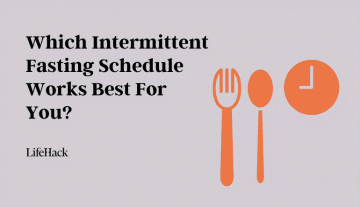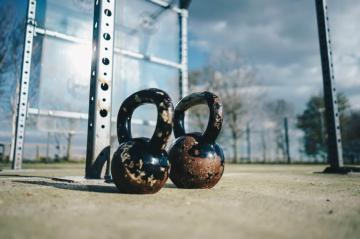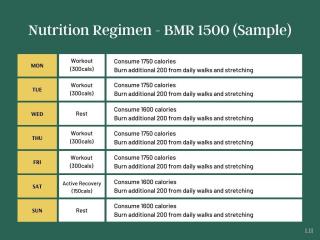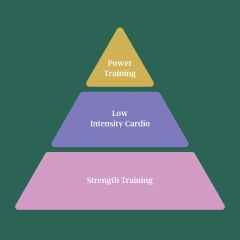Many of us have a wide range of experiences and achievements we want to have and reach during our lifetime. The final destinations always have a bright and shiny appeal about them but what we don’t often prepare for the twists, turns, and trials that can challenge us along the way. Here’s where knowing our strengths and weaknesses can be incredibly useful.
With a better idea of our resourcefulness and shortfalls, we aren’t only able to develop better plans to reach our goals, but we can also eliminate would-be challenges, experience a far more enjoyable journey as we progress toward our targets, and inevitably grow along the way.
The best way to identify your strengths and weaknesses involves a mix of methods. Some involve self-evaluation and others require a lending hand from others. By following these five steps, however, you’ll be eagerly embracing opportunities to increase your awareness of your strengths and weaknesses.
1. Identify Strengths and Weaknesses in Terms of Context
Firstly, forget drawing up a two-column table and listing your strengths on one side and weaknesses on the other without reference to a context. Doing so will be a completely pointless exercise. Without referencing your self-evaluation to a specific situation, you’re likely to wind up feeling overwhelmed and directionless.
According to researchers, strengths and weaknesses are highly contextual and dependent on the mix of our values, goals, interests, and situational factors. Given this, it’s helpful to begin by reviewing key situations in your life where you have goals for things to be better than they are.
Certain aspects of your work might require you to exercise different skills and knowledge to varying degrees. You might be experiencing challenges in your personal or family relationships. Perhaps you want to master skills at playing a musical instrument, a sport, or develop a creative or performing arts talent.
Whichever you choose, get to task on the following:
Determine what skills, knowledge, and style of application will bring the desired outcomes and changes to fruition. Review which of those you believe you have. Rate how close a fit you believe what you have is a fit to what is required (e.g. 10 might be a perfect fit and zero represents no skills, knowledge, or application capability). For ratings you ascribe yourself above zero, ask yourself how easy or challenging it is for you to apply the skills, knowledge, and understanding. Ask yourself, “What did I enjoy the most?” and “What did I enjoy the least?”It can also be more helpful and accurate to rate yourself along a continuum as opposed to trying to identify a trait, skill, or attribute as purely strength or weakness. You might be stronger in some regards and weaker/less strong in others.
You might also consider substituting ‘strengths’ and ‘weaknesses’ language for:
easiest to hardest effortless to effortful ineffective to highly effective completely unfamiliar to familiarDoing so lessens a tone of judgment often associated with the highly polarized strengths-weakness dichotomy.
Self-evaluation alone is not an effective means of discovering your strengths and weaknesses. If harboring lower self-esteem strikes a chord with you, you’re likely to be negatively biased and a harsher critic toward yourself.
Even though this initial reflection is a step in a helpful direction, its individual and subjective nature can do more harm than good. It’s time to engage an external evaluation tool designed to help filter out at least some level of that negative bias.
2. Carefully Select and Use Self-Assessment Tools
Self-evaluation tools greatly help you to make sense of and organize your strengths and weaknesses. Profiles that emerge from your answers enable you to recognize where it might be best to direct your energy and attention to improve your knowledge and skillset.
The formerly known Values in Action survey is now recognized as VIA Character Strengths. Despite the name change, it maintains that every individual—regardless of culture or nation—has varying degrees of 24 character strengths that constitute the best of our personalities.
Character strengths are defined by researchers and psychologists to be positive, trait-like capacities for thinking, feeling, and behaving in ways that benefit oneself and others.
The VIA Institute developed the survey from a strong foundation of research indicating how focusing on strengths has multiple benefits:
Increases in self-reported ratings of life satisfaction Improved workplace productivity and lower staff turnover Higher self-esteem, motivation, goal achievement, and sense of directionAs the VIA is a self-report tool, it’s important to note that your top strengths are those you identify to be such in amongst your other characteristics. The strengths are not identified as strengths in comparison with other individuals.
Another validated self-report tool, the Herrmann Brain Dominance Instrument® (HBDI), helps you recognize your preferred thinking styles. Categorizing how we think into four quadrants—analytical, experimental, relational, and practical—the instrument helps deepen our awareness of how we’re apt to think and tackle different situations and relationships.
Your results profile reflects where you might feel more at ease and where you might find challenges more arduous. According to the Australian Hermann Brain division, 58% of individuals completing the instrument are apt to predominantly operate from two quadrants and 34% prefer three.
There will be times you’re less apt to embrace activities and experiences willingly. More and different types of effort are required to undertake them.
While learning these insights can be incredibly useful, you need to caution yourself from falling into traps:
Shying away from situations because you have less aptitude for navigating through them with ease Making excuses to justify poor/lower effort because your natural thinking style isn’t accommodated forRemember, your attitude and positive psychology mental toolkit have a large influence on your capability. So, while your brain might currently work in certain ways automatically, it is still a neuroplastic machine.
You need to be cautious when evaluating yourself with self-assessment tools. Check to see what the recommended application is behind the tool to start with, particularly with psychometric tests and evaluations. Such assessments are created with different goals and intentions in mind. So, it’s important to identify the one which is most helpful to the context in which you’re looking to review your strengths and weaknesses.
3. Consult Qualified, Trusted Individuals
When we’re asked to describe the strengths we see in our friends, it’s a relatively easy task to do. However, when asked to do this exercise for ourselves, our list of weaknesses tends to carry far more weight than our strengths. The notion we are our own strongest (and often harshest) critics, rings true.
Conversely, the Dunning-Kruger effect can also be at play—you might think you’re better than you really are.
Founder of money management organization My Budget, Tammy Barton, describes how when undertaking performance reviews with her employees, there are clear differences between men and women. Women underreported their skillset, communicated lower self-efficacy, and shot for lower goals than men. With men, she witnessed more reports reflective of the Dunning-Kruger effect.
Because of these (often unconscious) biases we have, getting feedback from those qualified to give you feedback is essential. After all, you wouldn’t ask for advice on how to run a business from someone who has never run a business—nor would you ask your dentist to assess your heart’s health.
Finding the right authorities who can help us develop deeper insight into our strengths and weaknesses requires a few steps of due diligence:
Find those you believe might be qualified authorities to help you and research them. Check the integrity of their training, skills, experience, and track record. Be wary of testimonials as these can be orchestrated, false, and inauthentic. Ask yourself if the authority might have their agenda in addition to helping you identify your strengths and weaknesses. If you have the opportunity to develop an initial rapport with the person you seek feedback from, take time to do this so you can sense whether or not you feel you can trust their feedback.Getting helpful feedback from others isn’t always as straightforward as it can seem. Sometimes, paying an objective third party is a necessary step.
We must remember that others have their own biases, conscious, and unconscious. They see the world through a different lens than us so the likelihood of projection is quite high. A weakness they see in you may not be a weakness in the eyes of others who are also qualified to give you the same feedback.
Look to collate feedback from a few different qualified sources and look for common patterns and themes. Don’t stop at one source.
Also, avoid cross-contamination of feedback you’ve received from one source to another. You want as pure and independent insight about your strengths and weaknesses as you can get. This way, you’ll have not only a wider scope of review but also a more thorough one that be will be more accurate.
4. Test Yourself
Testing ourselves is something we rarely do. We don’t naturally seek out opportunities to have our skills, abilities, and personality characteristics scrutinized. However, this is what will give us the purest discovery and recognition of our strengths and weaknesses.
Put yourself through a variety of assessments that test you in several ways:
Skill-based Personality and traits Breadth and depth of applicable knowledgeConsciously and deliberately putting yourself in situations to test your skills and knowledge has a much higher likelihood of helping you address your weaknesses. Taking this approach is not only considered and directed, but it is also incredibly rewarding when you start experiencing and noticing changes you are aspiring to.
While you always have the choice to simply ‘see how things go’, there are drawbacks to letting things organically unfold:
You miss out on opportunities to diffuse emotional and mental discomfort emerging when your weaknesses are highlighted and emphasized. You deny yourself the ability to step into opportunities and experiences you truly want. You miss opportunities to recognize and capitalize on your strengths. You remain stale and stuck. Your mindset retains feeling a lowered agency of control to change unfavorable circumstances.Before you throw yourself into exercises to test yourself, check your expectations. Just as you can feel validated and have your self-esteem reinforced, expect also that you might feel challenged, disappointed, embarrassed, or humiliated.
Build support from different resources. Share with others you trust—qualified and unqualified—what you are doing, how you are testing yourself, and what you might be scared of. You don’t have to walk the vulnerable path of discovering your strengths and weaknesses alone.
Sharing your experiences and discoveries with others helps you cement whatever lessons you learn and lessen the weight of emotional and mental discomfort that can unfold in the testing process.
Also, pick wisely when and how you are going to test yourself. You don’t need to do them all at the same time. Too much feedback can be mentally and emotionally overwhelming. Personal development work is most effective when done in batches with time and space to rest in between.
As your insight grows around your strengths and weaknesses, give yourself time to accept and become familiar with what you have just discovered. Give yourself time to consider and adjust to changes you might consider making. One by one, address those changes.
5. Repeat the Process and Re-assess
Repeatedly looking at the previous steps at different times in your life is an invaluable life skill. The more we become adept at assessing and testing our strengths and weaknesses, the more it becomes a normal and healthy part of our life’s journey.
Rinsing and repeating the process carries many benefits. You can progress toward your goals faster. You improve your resilience. You can recognize opportunities that will be more enjoyable for you versus those you can expect to feel more challenged and uncomfortable. You can also orchestrate the times when you need to feel more in control of choosing better timing to strategically immerse yourself into uncomfortable challenges.
The most wonderful discovery you’ll reach through repeatedly reviewing your strengths and weaknesses over time is that there are no real strengths and no real weaknesses. It becomes more about recognizing where and when your blend of unique skills, attributes, and knowledge are harmonious, helpful, and appropriate and where and when they aren’t.
Final Thoughts
There are many ways that you can recognize your strengths and weaknesses, and there are also many ways you can try to tackle them. If you’re unsure what to do, just start with these 5 steps and you’ll be good to go!
More About Strengths and Weaknesses
Featured photo credit: Patrick Hendry via unsplash.com





























































